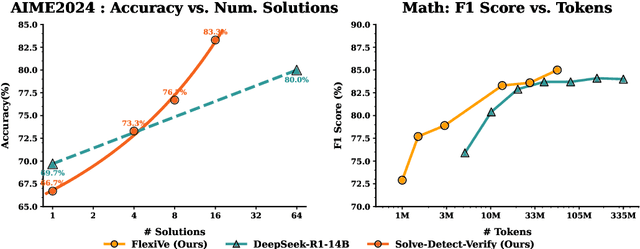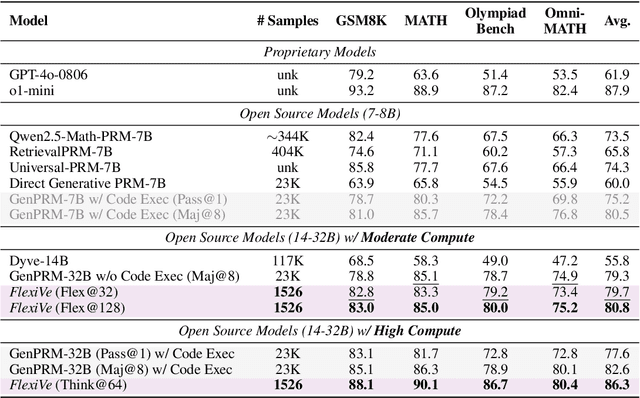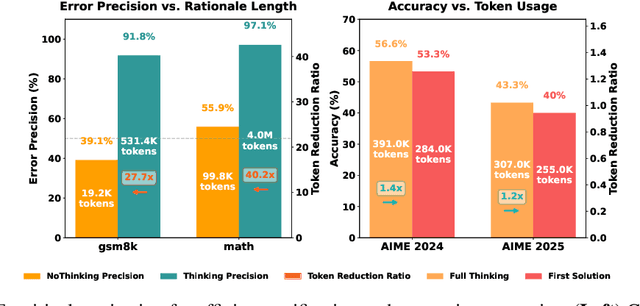Zeju Li
TinyUSFM: Towards Compact and Efficient Ultrasound Foundation Models
Oct 22, 2025Abstract:Foundation models for medical imaging demonstrate superior generalization capabilities across diverse anatomical structures and clinical applications. Their outstanding performance relies on substantial computational resources, limiting deployment in resource-constrained clinical environments. This paper presents TinyUSFM, the first lightweight ultrasound foundation model that maintains superior organ versatility and task adaptability of our large-scale Ultrasound Foundation Model (USFM) through knowledge distillation with strategically curated small datasets, delivering significant computational efficiency without sacrificing performance. Considering the limited capacity and representation ability of lightweight models, we propose a feature-gradient driven coreset selection strategy to curate high-quality compact training data, avoiding training degradation from low-quality redundant images. To preserve the essential spatial and frequency domain characteristics during knowledge transfer, we develop domain-separated masked image modeling assisted consistency-driven dynamic distillation. This novel framework adaptively transfers knowledge from large foundation models by leveraging teacher model consistency across different domain masks, specifically tailored for ultrasound interpretation. For evaluation, we establish the UniUS-Bench, the largest publicly available ultrasound benchmark comprising 8 classification and 10 segmentation datasets across 15 organs. Using only 200K images in distillation, TinyUSFM matches USFM's performance with just 6.36% of parameters and 6.40% of GFLOPs. TinyUSFM significantly outperforms the vanilla model by 9.45% in classification and 7.72% in segmentation, surpassing all state-of-the-art lightweight models, and achieving 84.91% average classification accuracy and 85.78% average segmentation Dice score across diverse medical devices and centers.
StaMo: Unsupervised Learning of Generalizable Robot Motion from Compact State Representation
Oct 06, 2025Abstract:A fundamental challenge in embodied intelligence is developing expressive and compact state representations for efficient world modeling and decision making. However, existing methods often fail to achieve this balance, yielding representations that are either overly redundant or lacking in task-critical information. We propose an unsupervised approach that learns a highly compressed two-token state representation using a lightweight encoder and a pre-trained Diffusion Transformer (DiT) decoder, capitalizing on its strong generative prior. Our representation is efficient, interpretable, and integrates seamlessly into existing VLA-based models, improving performance by 14.3% on LIBERO and 30% in real-world task success with minimal inference overhead. More importantly, we find that the difference between these tokens, obtained via latent interpolation, naturally serves as a highly effective latent action, which can be further decoded into executable robot actions. This emergent capability reveals that our representation captures structured dynamics without explicit supervision. We name our method StaMo for its ability to learn generalizable robotic Motion from compact State representation, which is encoded from static images, challenging the prevalent dependence to learning latent action on complex architectures and video data. The resulting latent actions also enhance policy co-training, outperforming prior methods by 10.4% with improved interpretability. Moreover, our approach scales effectively across diverse data sources, including real-world robot data, simulation, and human egocentric video.
ODYSSEY: Open-World Quadrupeds Exploration and Manipulation for Long-Horizon Tasks
Aug 11, 2025



Abstract:Language-guided long-horizon mobile manipulation has long been a grand challenge in embodied semantic reasoning, generalizable manipulation, and adaptive locomotion. Three fundamental limitations hinder progress: First, although large language models have improved spatial reasoning and task planning through semantic priors, existing implementations remain confined to tabletop scenarios, failing to address the constrained perception and limited actuation ranges of mobile platforms. Second, current manipulation strategies exhibit insufficient generalization when confronted with the diverse object configurations encountered in open-world environments. Third, while crucial for practical deployment, the dual requirement of maintaining high platform maneuverability alongside precise end-effector control in unstructured settings remains understudied. In this work, we present ODYSSEY, a unified mobile manipulation framework for agile quadruped robots equipped with manipulators, which seamlessly integrates high-level task planning with low-level whole-body control. To address the challenge of egocentric perception in language-conditioned tasks, we introduce a hierarchical planner powered by a vision-language model, enabling long-horizon instruction decomposition and precise action execution. At the control level, our novel whole-body policy achieves robust coordination across challenging terrains. We further present the first benchmark for long-horizon mobile manipulation, evaluating diverse indoor and outdoor scenarios. Through successful sim-to-real transfer, we demonstrate the system's generalization and robustness in real-world deployments, underscoring the practicality of legged manipulators in unstructured environments. Our work advances the feasibility of generalized robotic assistants capable of complex, dynamic tasks. Our project page: https://kaijwang.github.io/odyssey.github.io/
Spatial 3D-LLM: Exploring Spatial Awareness in 3D Vision-Language Models
Jul 22, 2025



Abstract:New era has unlocked exciting possibilities for extending Large Language Models (LLMs) to tackle 3D vision-language tasks. However, most existing 3D multimodal LLMs (MLLMs) rely on compressing holistic 3D scene information or segmenting independent objects to perform these tasks, which limits their spatial awareness due to insufficient representation of the richness inherent in 3D scenes. To overcome these limitations, we propose Spatial 3D-LLM, a 3D MLLM specifically designed to enhance spatial awareness for 3D vision-language tasks by enriching the spatial embeddings of 3D scenes. Spatial 3D-LLM integrates an LLM backbone with a progressive spatial awareness scheme that progressively captures spatial information as the perception field expands, generating location-enriched 3D scene embeddings to serve as visual prompts. Furthermore, we introduce two novel tasks: 3D object distance measurement and 3D layout editing, and construct a 3D instruction dataset, MODEL, to evaluate the model's spatial awareness capabilities. Experimental results demonstrate that Spatial 3D-LLM achieves state-of-the-art performance across a wide range of 3D vision-language tasks, revealing the improvements stemmed from our progressive spatial awareness scheme of mining more profound spatial information. Our code is available at https://github.com/bjshuyuan/Spatial-3D-LLM.
Solve-Detect-Verify: Inference-Time Scaling with Flexible Generative Verifier
May 17, 2025



Abstract:Large Language Model (LLM) reasoning for complex tasks inherently involves a trade-off between solution accuracy and computational efficiency. The subsequent step of verification, while intended to improve performance, further complicates this landscape by introducing its own challenging trade-off: sophisticated Generative Reward Models (GenRMs) can be computationally prohibitive if naively integrated with LLMs at test-time, while simpler, faster methods may lack reliability. To overcome these challenges, we introduce FlexiVe, a novel generative verifier that flexibly balances computational resources between rapid, reliable fast thinking and meticulous slow thinking using a Flexible Allocation of Verification Budget strategy. We further propose the Solve-Detect-Verify pipeline, an efficient inference-time scaling framework that intelligently integrates FlexiVe, proactively identifying solution completion points to trigger targeted verification and provide focused solver feedback. Experiments show FlexiVe achieves superior accuracy in pinpointing errors within reasoning traces on ProcessBench. Furthermore, on challenging mathematical reasoning benchmarks (AIME 2024, AIME 2025, and CNMO), our full approach outperforms baselines like self-consistency in reasoning accuracy and inference efficiency. Our system offers a scalable and effective solution to enhance LLM reasoning at test time.
DeepCircuitX: A Comprehensive Repository-Level Dataset for RTL Code Understanding, Generation, and PPA Analysis
Feb 25, 2025



Abstract:This paper introduces DeepCircuitX, a comprehensive repository-level dataset designed to advance RTL (Register Transfer Level) code understanding, generation, and power-performance-area (PPA) analysis. Unlike existing datasets that are limited to either file-level RTL code or physical layout data, DeepCircuitX provides a holistic, multilevel resource that spans repository, file, module, and block-level RTL code. This structure enables more nuanced training and evaluation of large language models (LLMs) for RTL-specific tasks. DeepCircuitX is enriched with Chain of Thought (CoT) annotations, offering detailed descriptions of functionality and structure at multiple levels. These annotations enhance its utility for a wide range of tasks, including RTL code understanding, generation, and completion. Additionally, the dataset includes synthesized netlists and PPA metrics, facilitating early-stage design exploration and enabling accurate PPA prediction directly from RTL code. We demonstrate the dataset's effectiveness on various LLMs finetuned with our dataset and confirm the quality with human evaluations. Our results highlight DeepCircuitX as a critical resource for advancing RTL-focused machine learning applications in hardware design automation.Our data is available at https://zeju.gitbook.io/lcm-team.
DeepRTL: Bridging Verilog Understanding and Generation with a Unified Representation Model
Feb 20, 2025Abstract:Recent advancements in large language models (LLMs) have shown significant potential for automating hardware description language (HDL) code generation from high-level natural language instructions. While fine-tuning has improved LLMs' performance in hardware design tasks, prior efforts have largely focused on Verilog generation, overlooking the equally critical task of Verilog understanding. Furthermore, existing models suffer from weak alignment between natural language descriptions and Verilog code, hindering the generation of high-quality, synthesizable designs. To address these issues, we present DeepRTL, a unified representation model that excels in both Verilog understanding and generation. Based on CodeT5+, DeepRTL is fine-tuned on a comprehensive dataset that aligns Verilog code with rich, multi-level natural language descriptions. We also introduce the first benchmark for Verilog understanding and take the initiative to apply embedding similarity and GPT Score to evaluate the models' understanding capabilities. These metrics capture semantic similarity more accurately than traditional methods like BLEU and ROUGE, which are limited to surface-level n-gram overlaps. By adapting curriculum learning to train DeepRTL, we enable it to significantly outperform GPT-4 in Verilog understanding tasks, while achieving performance on par with OpenAI's o1-preview model in Verilog generation tasks.
Learning Label Refinement and Threshold Adjustment for Imbalanced Semi-Supervised Learning
Jul 07, 2024



Abstract:Semi-supervised learning (SSL) algorithms struggle to perform well when exposed to imbalanced training data. In this scenario, the generated pseudo-labels can exhibit a bias towards the majority class, and models that employ these pseudo-labels can further amplify this bias. Here we investigate pseudo-labeling strategies for imbalanced SSL including pseudo-label refinement and threshold adjustment, through the lens of statistical analysis. We find that existing SSL algorithms which generate pseudo-labels using heuristic strategies or uncalibrated model confidence are unreliable when imbalanced class distributions bias pseudo-labels. To address this, we introduce SEmi-supervised learning with pseudo-label optimization based on VALidation data (SEVAL) to enhance the quality of pseudo-labelling for imbalanced SSL. We propose to learn refinement and thresholding parameters from a partition of the training dataset in a class-balanced way. SEVAL adapts to specific tasks with improved pseudo-labels accuracy and ensures pseudo-labels correctness on a per-class basis. Our experiments show that SEVAL surpasses state-of-the-art SSL methods, delivering more accurate and effective pseudo-labels in various imbalanced SSL situations. SEVAL, with its simplicity and flexibility, can enhance various SSL techniques effectively. The code is publicly available~\footnote{\url{https://github.com/ZerojumpLine/SEVAL}}.
3DMIT: 3D Multi-modal Instruction Tuning for Scene Understanding
Jan 16, 2024



Abstract:The remarkable potential of multi-modal large language models (MLLMs) in comprehending both vision and language information has been widely acknowledged. However, the scarcity of 3D scenes-language pairs in comparison to their 2D counterparts, coupled with the inadequacy of existing approaches in understanding of 3D scenes by LLMs, poses a significant challenge. In response, we collect and construct an extensive dataset comprising 75K instruction-response pairs tailored for 3D scenes. This dataset addresses tasks related to 3D VQA, 3D grounding, and 3D conversation. To further enhance the integration of 3D spatial information into LLMs, we introduce a novel and efficient prompt tuning paradigm, 3DMIT. This paradigm eliminates the alignment stage between 3D scenes and language and extends the instruction prompt with the 3D modality information including the entire scene and segmented objects. We evaluate the effectiveness of our method across diverse tasks in the 3D scene domain and find that our approach serves as a strategic means to enrich LLMs' comprehension of the 3D world. Our code is available at https://github.com/staymylove/3DMIT.
Post-Deployment Adaptation with Access to Source Data via Federated Learning and Source-Target Remote Gradient Alignment
Aug 31, 2023


Abstract:Deployment of Deep Neural Networks in medical imaging is hindered by distribution shift between training data and data processed after deployment, causing performance degradation. Post-Deployment Adaptation (PDA) addresses this by tailoring a pre-trained, deployed model to the target data distribution using limited labelled or entirely unlabelled target data, while assuming no access to source training data as they cannot be deployed with the model due to privacy concerns and their large size. This makes reliable adaptation challenging due to limited learning signal. This paper challenges this assumption and introduces FedPDA, a novel adaptation framework that brings the utility of learning from remote data from Federated Learning into PDA. FedPDA enables a deployed model to obtain information from source data via remote gradient exchange, while aiming to optimize the model specifically for the target domain. Tailored for FedPDA, we introduce a novel optimization method StarAlign (Source-Target Remote Gradient Alignment) that aligns gradients between source-target domain pairs by maximizing their inner product, to facilitate learning a target-specific model. We demonstrate the method's effectiveness using multi-center databases for the tasks of cancer metastases detection and skin lesion classification, where our method compares favourably to previous work. Code is available at: https://github.com/FelixWag/StarAlign
 Add to Chrome
Add to Chrome Add to Firefox
Add to Firefox Add to Edge
Add to Edge